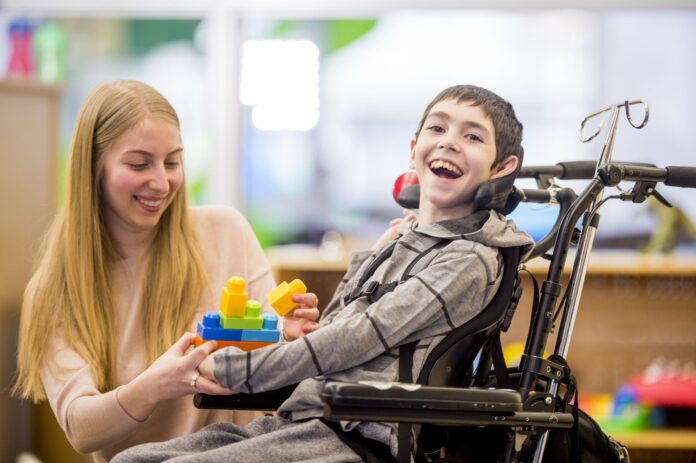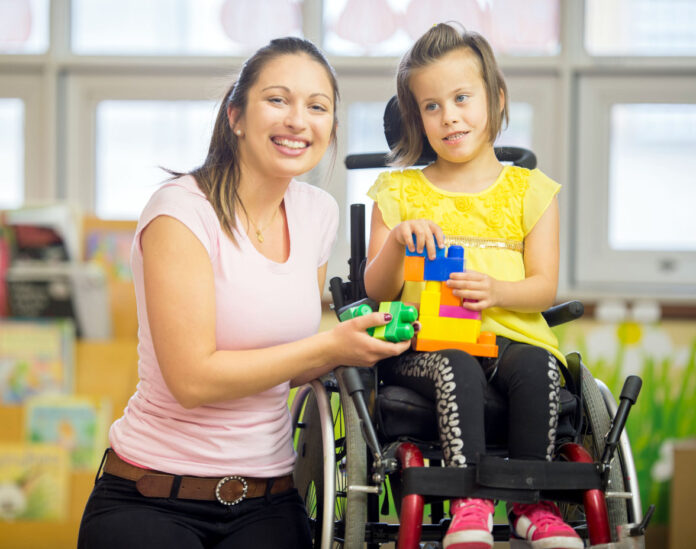Cerebral Palsy consists of medical disorders that affect balance movement, posture, and motor control. Most often, cerebral Palsy develops because of some birth-related injury.
Experts agree that due to some forms of medical malpractice or negligence, the supply of blood and oxygen to the brain gets cut off. The result is brain cell death, which often spreads, leading to temporary or permanent damages. If your child is injured by medical malpractice and develops CP, you can file a medical malpractice lawsuit to receive financial compensation. According to birthinjurylawyer.com, your case could vary from mild to severe. Still, you have options for recovering the high medical bills, pain and suffering, and other damages.
The High Costs of Treating Cerebral Palsy
According to studies, the lifetime costs of treating CP can run a little over $1 million. That’s in addition to normal living costs and the costs involved in remodeling the home to make it more disability-friendly. The overwhelming costs of treatment often frustrate parents. Still, there are many governmental agencies and charitable and private resources (like the early intervention program), government benefits, non-profit assistance, and legal compensation for medical malpractice.

What Causes Cerebral Palsy?
Cerebral Palsy is caused by damage to the developing brain or abnormal brain development. The disorder affects your infant’s ability to control the muscles properly. The main causes of this abnormal development are genetic, but birth-related injuries cause most cases. However, any disease or injury that restricts blood and oxygen flow to the infant’s brain could be responsible.
According to the CDC, the symptoms of CP vary. For example, your child might need special equipment to walk or be unable to walk entirely. Some victims of the disease need lifelong care, but others might walk awkwardly. Many CP victims might survive without special medical treatment, but others can suffer learning disabilities, seizures, spinal changes like scoliosis, joint problems, vision problems, hearing or speaking difficulties.
Types of Cerebral Palsy
Doctors classify cerebral Palsy into four distinct types based on the underlying movement problems. For example, your child could easily develop one or more of the following types of CP:
- Spastic Cerebral Palsy: Spastic CP is the most common type that affects 80% of CP patients. The disease increases muscle tone, which makes muscles more stiff and awkward. Spastic cerebral palsy includes spastic diplegia/diaresis, spastic hemiplegia/hemiparesis and spastic quadriplegia/quadriparesis.
- Dyskinetic Cerebral Palsy: This term also includes athetoid, choreoathetosis, and dystonic cerebral palsies. This type of CP generates problems controlling the movement of feet, hands, legs, and arms. Sitting and walking become challenging. The muscle tone of victims can change daily.
- Ataxic Cerebral Palsy: This type generates problems maintaining balance and coordination. Victims might walk unsteadily and appear drunk or high. It becomes very difficult to make quick movements and adjustments. Victims often have problems reaching and holding onto objects.
- Mixed Cerebral Palsy: This type of CP generates symptoms of more than one type.

The Signs of Cerebral Palsy
Most cases present well-defined symptoms, but not all cases are as easily detected. Unfortunately, that’s a problem because early detection and treatment improve the prognosis for recovery. Generally, you can detect CP by noticing problems with motor control when compared with children of a similar age. Delays in sitting, standing, walking, running, and reaching objects are common warning signs of CP.
If your child is under six months of age, look for signs the head is lagging when the child is picked up. For example, the child might feel abnormally stiff or floppy. Another common sign occurs when you pick up the child. It often appears like the child is pushing away from you.
If your child is over six months of age, look for the following signs of CP:
- The child doesn’t roll in either direction.
- The child has problems bringing the hand to the mouth.
- The child can’t bring their hands together.
- The child uses one hand exclusively.
- The child crawls in a crooked way.
- The child avoids crawling on all fours and scoots around on their backside.
Cerebral Palsy Screening and Diagnosis
It’s important to diagnose CP as early as possible using any tools that are available to you. Monitoring your child is relatively simple and generates many benefits, such as faster learning. In addition, you can take your child for developmental screening to detect motor delays and receive further medical evaluations.

Surviving Medical Malpractice
Some statistics indicate that 10% of CP cases are caused by medical errors, including head injuries, crimped umbilical cords, infant jaundice, maternal medical issues, breech births, and delays in operating. In addition, many infants receive rough handling by inexperienced medical staff members.
When negotiating a settlement or arguing before a judge/jury, your attorney presents evidence, medical records, and expert testimony to win a medical malpractice case. The lawyer often employs an expert investigating team to strengthen the case, and many work on a contingency basis. That means you don’t need to pay the attorney unless the team receives a settlement or court award.
Negotiating a Settlement
An experienced malpractice attorney can help you in myriad ways by negotiating with insurance companies, investigating your malpractice claim, and threatening to take the case to court. Few cases inspire large jury awards as often as cerebral palsy cases. Your attorney can win compensation as follows:
- Coverage of past, present, and future medical expenses
- Money for physical pain and suffering
- Settlement for emotional pain and suffering
- Ongoing rehabilitation costs
- Compensation for the loss of a normal life
- The estimated loss of future earning ability
Parents have won CP settlements as high as $9 million, so finding a specialized attorney and fighting the case in court might be worth your trouble.

Fight for Your Family
It’s important to find a skilled CP attorney in your city/state versed in dealing with medical malpractice lawsuits and going against big hospitals and insurers. Cerebral Palsy occurs more frequently than anyone likes to imagine, making it a serious legal situation. While some doctors/clinics will try to make the problem go away by paying what they owe you and your family, most will hide behind armies of insurance adjusters and lawyers. You should do the same and fight for your child’s chance at a normal, happy life.









